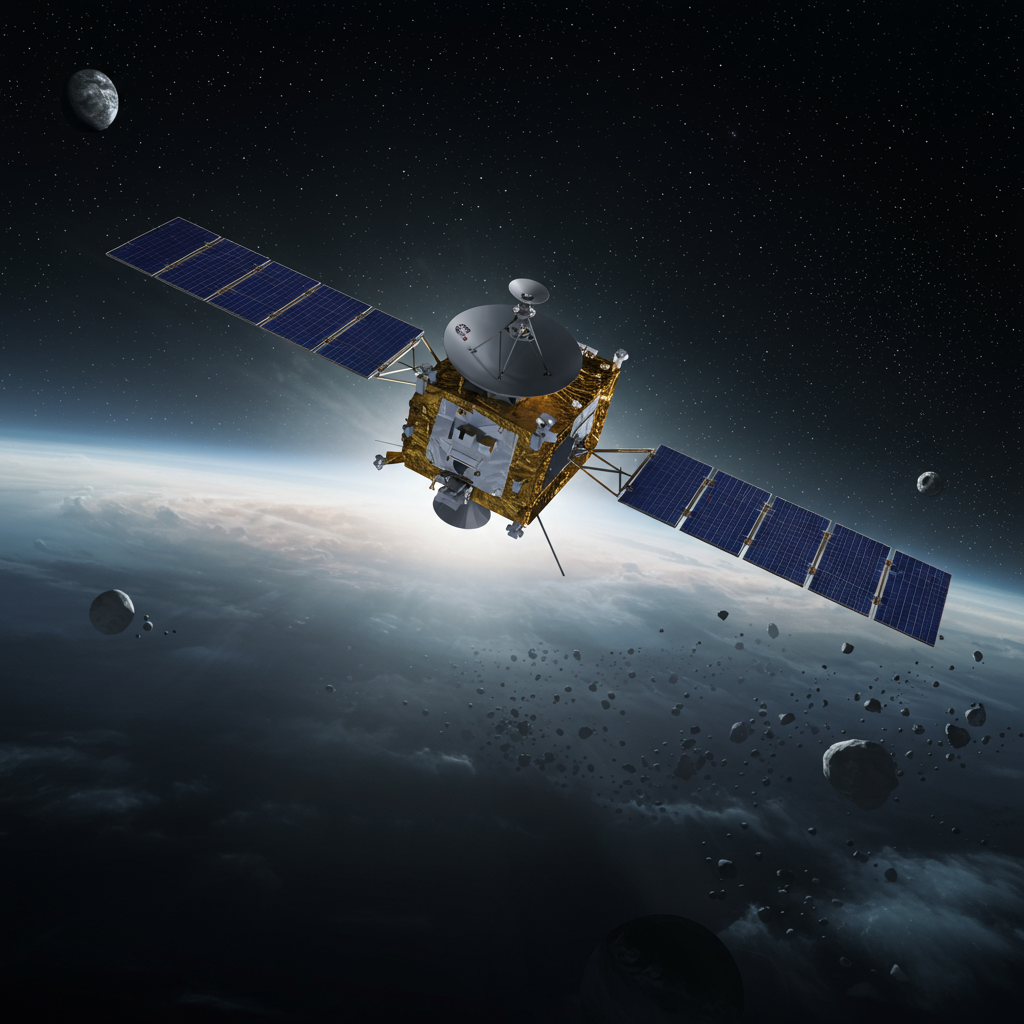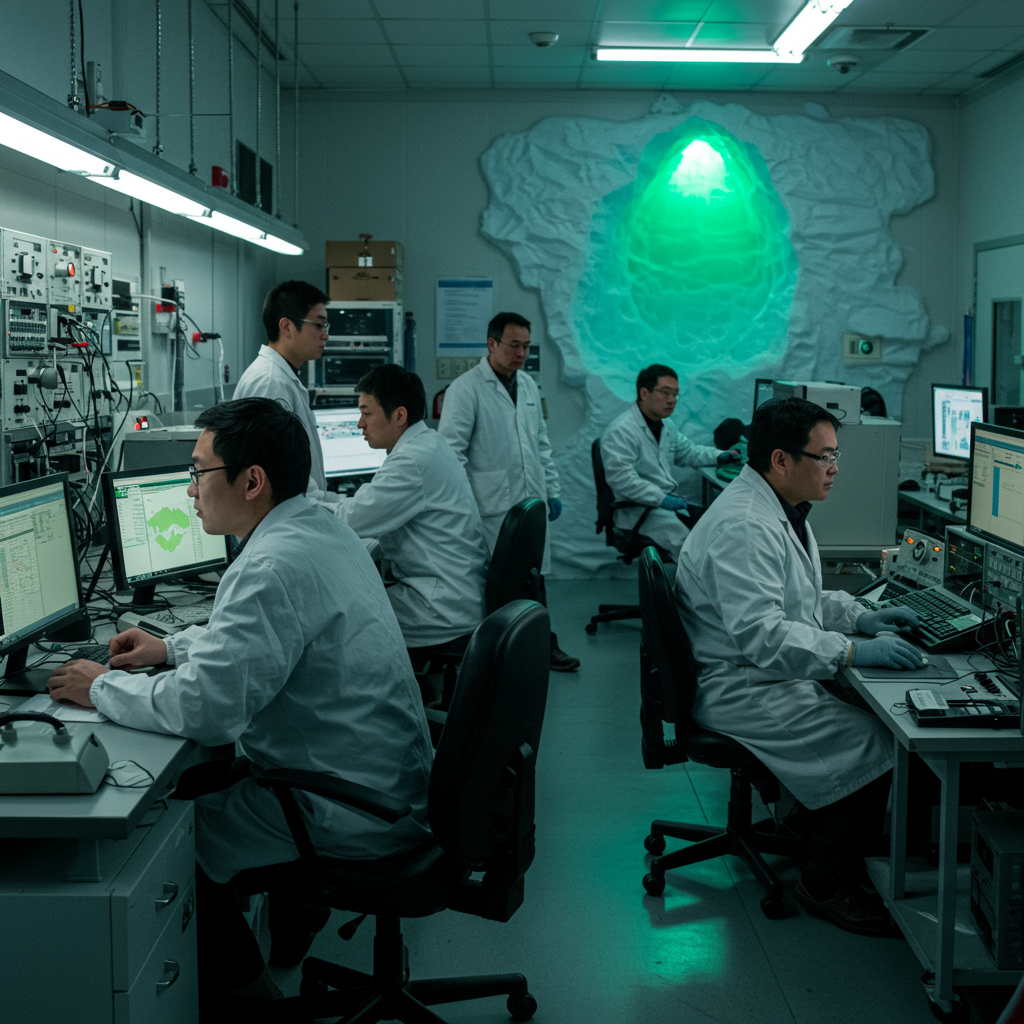NASA’s New Horizons spacecraft recently marked a historic first, successfully demonstrating a revolutionary navigation method while journeying through the distant Kuiper Belt. Traveling over 5.5 billion miles (8.8 billion kilometers) from earth, the probe proved that spacecraft can accurately determine their position in deep space using the stars alone. This groundbreaking achievement represents a significant step toward enabling future interstellar missions, offering a precise and independent way for probes to chart their course far beyond our solar system.
The test, conducted by an international team of astronomers, utilized the principle of stellar parallax. This phenomenon causes nearby stars to appear to shift their position against the backdrop of more distant stars when viewed from different vantage points. By capturing images of two relatively close stellar neighbors—Proxima Centauri and Wolf 359—from its unique location deep in the outer solar system, New Horizons provided the necessary data. Comparing these images with simultaneous observations from Earth allowed scientists to measure the apparent shift and precisely calculate the spacecraft’s location.
This innovative proof-of-concept experiment, detailed in results accepted for publication in The Astronomical Journal, highlights the power of stellar parallax for cosmic navigation. While the data wasn’t intended for primary mission navigation, it offered critical validation for the technique’s feasibility. The results provide a foundational reference point for planning long-duration missions that venture far from Earth’s traditional communication and navigation infrastructure.
How Deep Space Navigation Works Using Stars
Navigating spacecraft across the vastness of space typically relies on Earth-based tracking systems. These systems measure the distance and velocity of a probe using radio signals. However, as missions travel farther from Earth, these signals weaken, and the time delay for communication increases significantly. For future missions heading to interstellar space or distant star systems, an autonomous, onboard navigation method becomes essential.
Stellar navigation offers a solution by using the stars themselves as fixed points of reference. The core concept, stellar parallax, is something astronomers use to measure the distances to nearby stars from Earth. As Earth orbits the Sun, our vantage point changes over six months, causing close stars to appear to wobble slightly against more distant backgrounds. The amount of this apparent shift allows astronomers to calculate the star’s distance.
New Horizons reversed this concept. Instead of using Earth’s orbit to measure star distances, it used the known positions of stars to measure its own position from a point incredibly distant from Earth. By capturing images of Proxima Centauri (4.2 light-years away) and Wolf 359 (7.86 light-years away) from its vantage point and comparing their apparent positions to how they look from Earth, the team could calculate the spacecraft’s precise location in three-dimensional space.
Measuring the Cosmic Shift
The experiment demonstrated remarkable accuracy for a proof-of-concept. The team was able to pinpoint New Horizons’ position within an estimated 4.1 million miles. To put this distance into perspective, the project lead, Tod Lauer of NSF’s NOIRLab, offered an analogy: achieving this level of accuracy over billions of miles is roughly equivalent to pinpointing a location on Earth within about 26 inches across the entire distance between New York and Los Angeles.
This precision, achievable autonomously onboard the spacecraft, is crucial. It means future probes venturing to distant locations, perhaps even outside our solar system or towards other star systems, could potentially navigate without constant reliance on communication with Earth. This reduces operational complexity and enhances mission independence, especially during critical maneuvers.
A New Era for Far-Reaching Exploration
The success of this deep space stellar navigation test is more than just a technical validation; it’s a practical step towards realizing humanity’s ambitions for exploring the far reaches of the cosmos. NASA and other space agencies are actively planning missions that will push the boundaries of our solar system and beyond.
For example, upcoming phases of the Artemis program aim to establish a sustainable human presence on the Moon, serving as a stepping stone for journeys to Mars. Missions like the Europa Clipper will travel to Jupiter’s icy moon, and the Dragonfly mission will send a rotorcraft to explore Saturn’s moon Titan in the 2030s. Navigating precisely to these distant, complex destinations requires increasingly sophisticated methods.
While these missions are within our solar system, the technique demonstrated by New Horizons has implications for even more ambitious future endeavors. Probes exploring the heliosphere’s boundary—the edge of the Sun’s magnetic influence—or potential future missions targeting exoplanets in other star systems would operate at distances where traditional navigation becomes incredibly challenging.
Enabling Future Missions
Tod Lauer highlighted the significance of the experiment, noting that taking simultaneous images from Earth and the spacecraft made the concept of stellar parallax “instantly and vividly clear.” He added, “It’s one thing to know something, but another to say ‘Hey, look! This really works!'” This tangible demonstration validates that stellar navigation technology could indeed play a critical role in enabling longer, more complex interstellar missions.
New Horizons, already famed for its historic 2015 flyby of Pluto and subsequent exploration of the Kuiper Belt object Arrokoth, continues its extended mission studying the heliosphere. As it travels toward the termination shock, the theoretical boundary marking the edge of the heliosphere and the beginning of true interstellar space, its achievements in stellar navigation add another pioneering chapter to its legacy.
Developing robust deep space navigation techniques is a key component of NASA’s broader strategy, which includes advancements in areas like deep space optical communications (DSOC) for faster data transmission over vast distances. Together, these technological leaps are making the dream of exploring distant star systems and interstellar space gradually more attainable for future generations.
The Path Beyond Our Solar System
Refining methods of stellar navigation allows space agencies to plan for more ambitious voyages, potentially including crewed missions or robotic probes to explore environments far beyond our current reach. The ability to autonomously determine a spacecraft’s position, velocity, and orientation based on celestial observations is fundamental for long-duration space travel where real-time Earth communication is impractical.
The New Horizons mission’s successful test proves that stellar navigation is not just a theoretical concept but a viable tool. It underscores the growing expertise within the scientific community in overcoming the immense navigational challenges presented by the vast and unknown expanse beyond our solar system. As we continue to push the boundaries of exploration, charting a course through the stars using precise, onboard methods like stellar parallax will be essential for navigating the future of cosmic discovery.
Frequently Asked Questions
What is stellar parallax navigation and how did New Horizons use it?
Stellar parallax navigation is a method for determining a spacecraft’s position in space by observing the apparent shift of nearby stars against a distant background. This shift occurs when the observer changes location. NASA’s New Horizons probe, while over 5.5 billion miles from Earth, captured images of Proxima Centauri and Wolf 359. By comparing these images to simultaneous images taken from Earth, scientists measured the difference in the stars’ apparent positions, using this data to calculate the spacecraft’s precise location in the Kuiper Belt.
Why is deep space stellar navigation important for future missions?
Traditional spacecraft navigation often relies on communication with Earth. However, for missions traveling very far from Earth, like those heading to the edge of the solar system, interstellar space, or other star systems, communication delays become significant, and signals weaken. Deep space stellar navigation provides an autonomous, onboard method for a spacecraft to determine its position independently using observations of stars. This is crucial for enabling long-duration missions to distant destinations, reducing reliance on Earth communication, and allowing for quicker navigation adjustments.
How accurate was the navigation test performed by New Horizons?
The New Horizons stellar navigation test successfully pinpointed the spacecraft’s position in the Kuiper Belt within an accuracy of approximately 4.1 million miles. While this might seem like a large distance, it was a highly successful proof-of-concept demonstration of the technique’s feasibility from such an immense distance. Project lead Tod Lauer described this accuracy, relative to the vast distance from Earth, as being analogous to pinpointing a location on Earth within about 26 inches over the distance between New York and Los Angeles.
The successful demonstration by New Horizons highlights the potential of stellar navigation to become a cornerstone technology for future interstellar exploration. As NASA and its partners plan journeys to destinations previously thought unreachable, the ability to navigate precisely and autonomously through the cosmos will be paramount, guiding humanity’s next steps into the stars.




